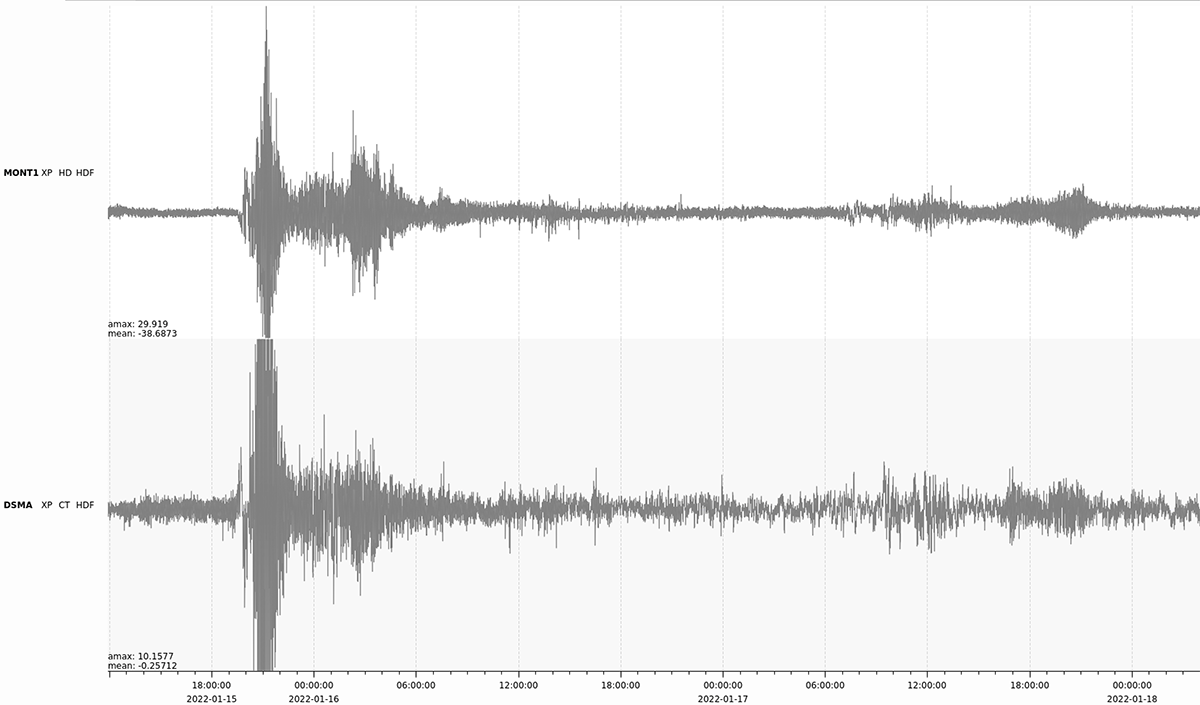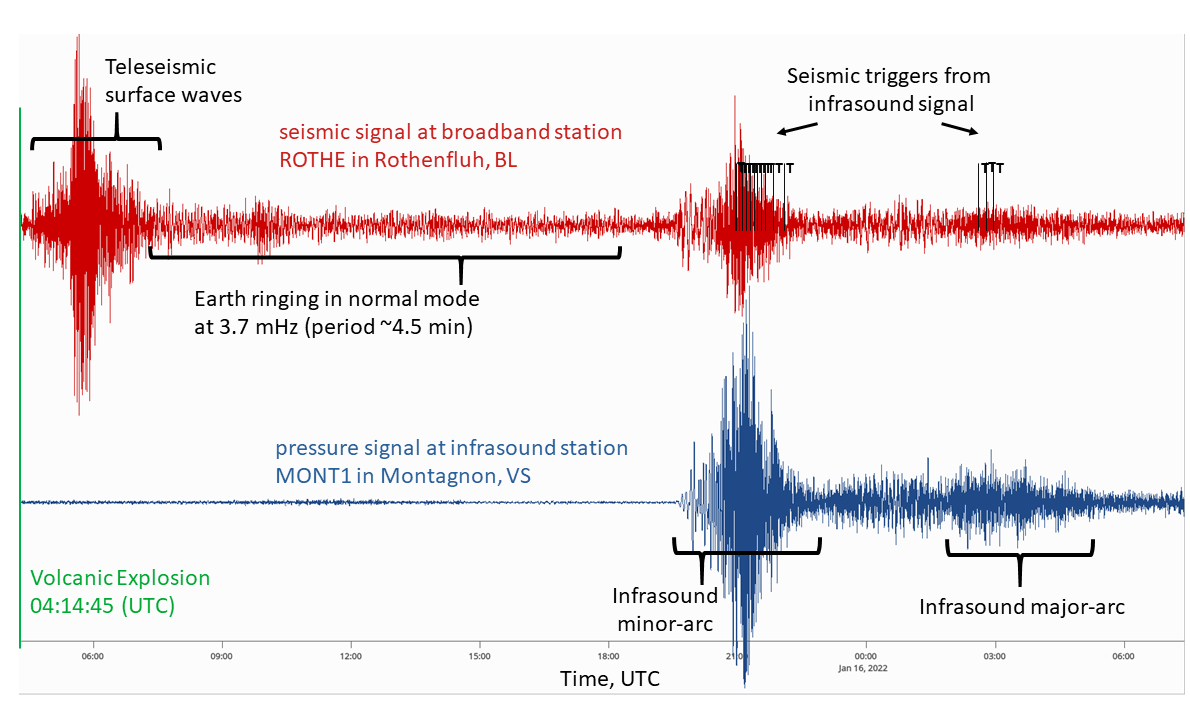2022-01-18
Waves from Tonga volcanic eruption have already circled Earth twice
The massive submarine eruption of the Hunga-Tonga-Hunga-Ha'apai volcano in the South Pacific on 15 January 2022 was registered by the seismic stations of the Swiss Seismological Service at ETH Zurich (SED). The volcanic explosion began at 05:14 Swiss time and generated seismic waves equivalent to a magnitude 5.8 earthquake. Seismic body waves reached the Swiss seismic network around 20 minutes later, having passed directly through the Earth. Body waves propagate at speeds of 5–10 km/second (36,000 km/h). Another 30 minutes later, seismic surface waves – which travel more slowly – also reached Switzerland. The Swiss network continued to record the Earth 'ringing' in normal mode for more than 12 hours after the surface waves had subsided. This is where the Earth vibrates at characteristic frequencies determined by its internal structure. These vibrations, with a period of approximately 4.5 minutes, were also observed after the eruption of the Philippine volcano Mount Pinatubo in 1991.
Such volcanic explosions also create pressure waves in the atmosphere, as described in this MeteoSwiss blog (in German). Infrasound waves, which have frequencies below the lower limit of human audibility (between approximately 15 Hz and 0.001 Hz), are only slightly attenuated in the atmosphere and can be measured over very long distances. Infrasound travels at a speed of around 1,200 km/h. These waves showed up clearly on the SED's highly sensitive broadband monitoring stations and on SED-operated infrasound sensors from around 20:30 Swiss time, a little over 15 hours after the seismic waves reached Switzerland. The dispersion of these infrasound waves (i.e. the way their propagation velocity depends on their frequency) can also be clearly seen, with low frequencies propagating slightly faster and arriving first, followed by progressively higher frequencies. An initial period of strong signals lasting a good two hours was caused by the waves that reached us directly. Around five hours later, the signals that propagated in the opposite direction can be seen, with significantly smaller amplitudes. Another spike was observed on the morning of 17 January as the waves circled the Earth for a second time. The infrasound signals caused a number of false seismic triggers during automatic data processing at the seismic monitoring stations.

